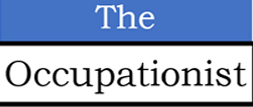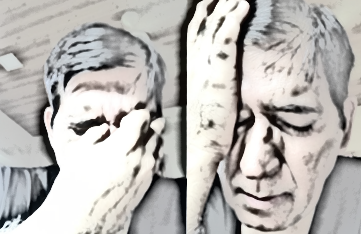Eye discomfort use to happen even a few decades ago but were much lesser and the reasons were different. Eye discomforts were found in the elderly, those doing a lot of data entering work in register books, and due to inadequate (dim) lighting.
Good lighting is important in reducing eye discomfort.
In the last few years, lighting has improved but not the glare. In fact, the glare has increased and so the glare time. Mobile phones, computers and TV are the biggest sources of glare. The register books are gone – today all data is fed in the computer.
The various eye discomfort a worker can have are enumerated below:
- eyestrain (eye pain)
- dry eyes
- blurred vision
- red or pink eyes
- burning in the eyes
- light sensitivity
- headaches
Over the years, lighting has improved but not the glare. In fact, the glare has increased and so the glare time.
Eye discomfort is caused by:
- poor lighting
- glare on a computer or mobile phone screen
- dim lighting and too much brightness on the computer or mobile phone screen
- poor quality computer or mobile phone screen (e.g., poor resolution, blurry image, etc.)
- poor seating posture
- incorrect viewing distance
- uncorrected prior vision
- dry air
- ventilation
- indoor air quality
- a combination of the above factors
Indoor air quality impacts the comfort of the eye due to following:
- Indoor air contaminants – chemicals, dusts, moulds or fungi, bacteria, gases, vapours, odours etc.
- Indoor environment – temperature, humidity, air circulation, ventilation
- Inadequate air intake from outside
Just as industries having high-noise areas have hearing conservation program, it is worth considering having an ‘eye protection program’ in factories and offices.
Good lighting is important in reducing eye discomfort. Lighting audit will assure if lighting in the workplace is adequate or not. Lights shouldn’t be dim or too bright that it is difficult to read printed documents.
Most offices have computers that lead to not only just eye problems but musculoskeletal problems (like neck pain, back pain, carpal tunnel syndrome etc.) as well that can be mitigated by observing the following steps:
- Take adequate breaks (I suggest stretching in the chair after 30-40 minutes followed by getting up from the chair, walking around for a minute and viewing a distant object before getting back to the seat)
- Avoid viewing the computer screen from a close distance and for a longer time
- Avoid any glare hitting the computer screen
- Ensure adequate ambient lighting
- Make Workstation (computer, chair, keyboard, mouse etc.) comfortable
- Check vision to avoid eyestrain (see an optician once every year or two)
- Room or hall to have colour variety
Just as industries having high-noise areas have hearing conservation program to protect hearing of workers who are working in high-noise areas, it is worth considering having an ‘eye protection program’ not only in factories (to protect workers from getting hurt due to flying objects) but also in offices.
Take few of the self-steps proactively and you may not have to see a doctor reactively!
The Occupational Health physician, whose primary responsibility is to proactively prevent illnesses happening due to work, workplace or working conditions, would recommend the following simple steps to mitigate eye discomfort as part of ‘eye protection program.’
- Adequate breaks: Create awareness in employees about the significance of taking frequent breaks. There are software available that prompt you to take breaks – follow them. In absence of any such software embedded in your computer, I suggest getting up from the chair after about 30-40 minutes of work, blinking the eyes, stretching for a while, walking a few paces in the room, viewing a distant object like a tree, and then returning back to the chair. Even while working with computers it is advisable to look away from the screen for a few seconds.
- Lighting in the room/hall: Lighting should be adequate enough that it does not strain the eyes during normal work.
- Glare: Make sure there is no glare either from the windows or shiny floors and walls. Use blinds (curtains) in the windows and matte finish tiles on the floor and paints on the wall.
- Monitor: The brightness and contrast of the monitor should not hurt the eyes. If viewing the monitor hurts or strains the eyes, adjust the brightness and contrast. Make sure there is no glare hitting the monitor screen.
In the absence of an OH physician, the proactive steps as mentioned above, if taken, are useful not just due to mitigate eye discomfort due to work, workplace or working conditions but even otherwise – as the screen time and hence the glare has increased due to advent of smart phones and other gaming devices.
If you have eye discomfort that persists after taking the above-mentioned self-steps, see an optician (or an eye specialist).
Take few of the self-steps proactively (prominent among them being making sure the room your work is ventilated, is clean and free of dust and moulds, and has adequate lighting), and you may not have to see a doctor reactively!
For more info, contact
____________________________________________________________________________________________
Dr Ajay Sati is an Occupational Health physician who prefers to describe himself as an Occupationist, to denote, ‘an expert in diseases and other concerns of occupations.’ Dr Sati has managed health and wellness programs in industries he worked, like the atomic energy, and energy (oil & gas) in India and overseas. An experienced virtual consultation expert he was involved in many greenfield and brownfield projects providing inputs from health point of view.



